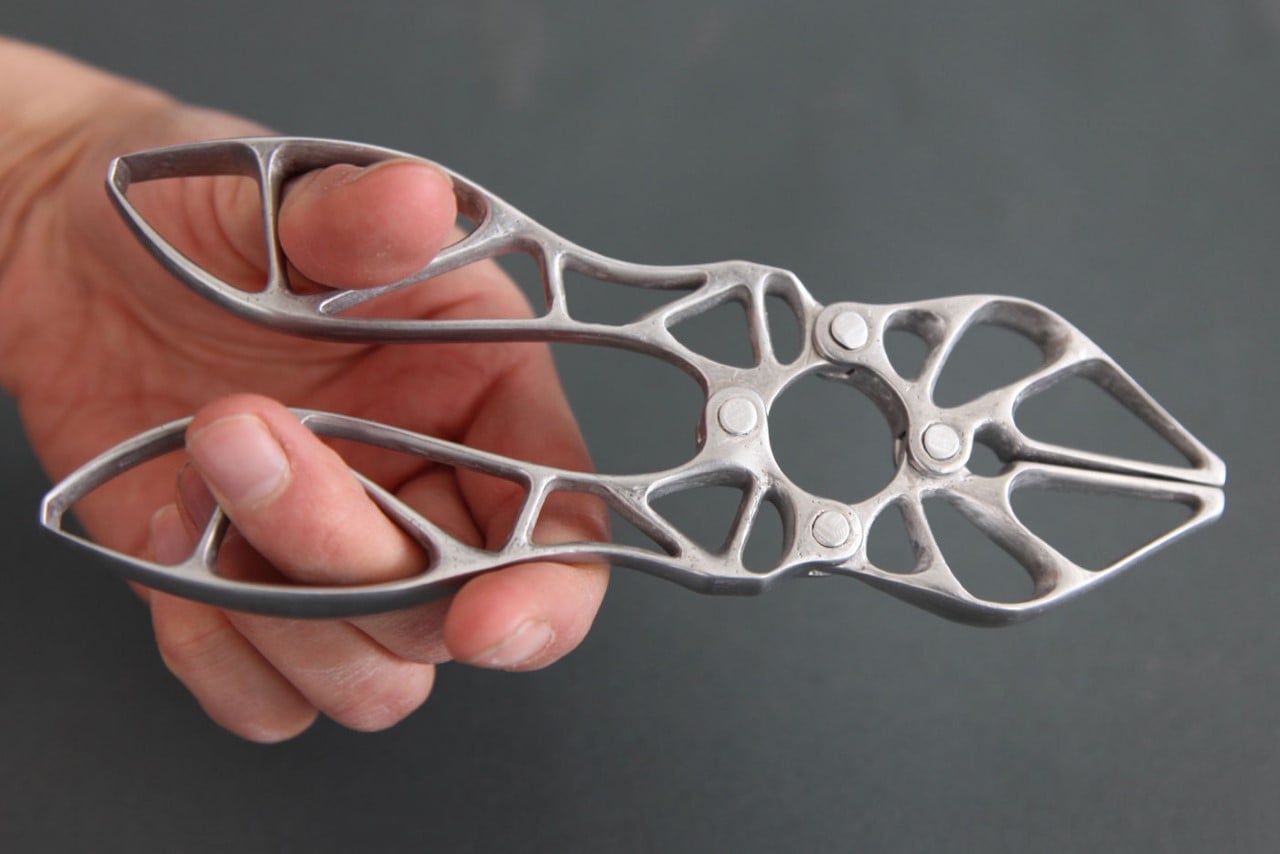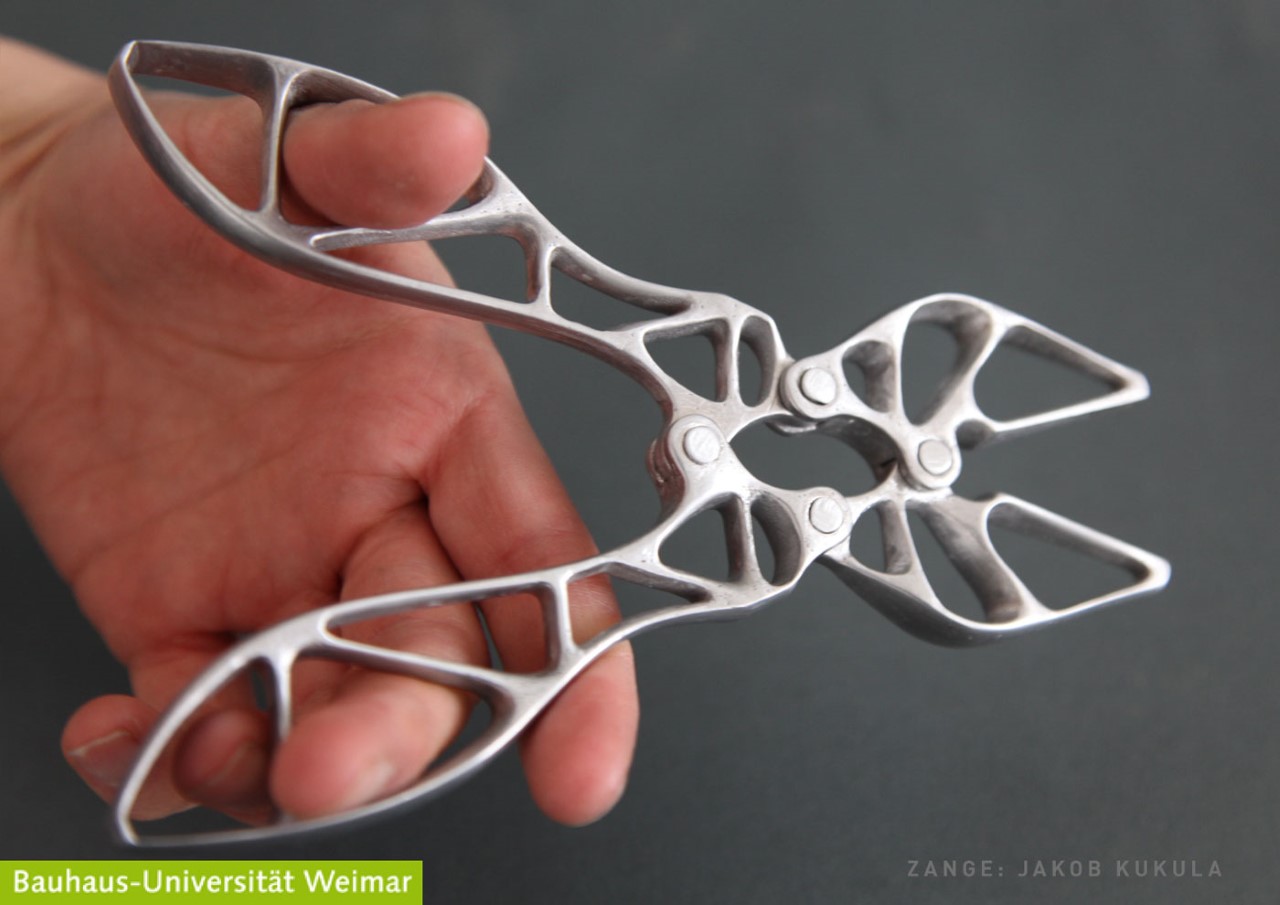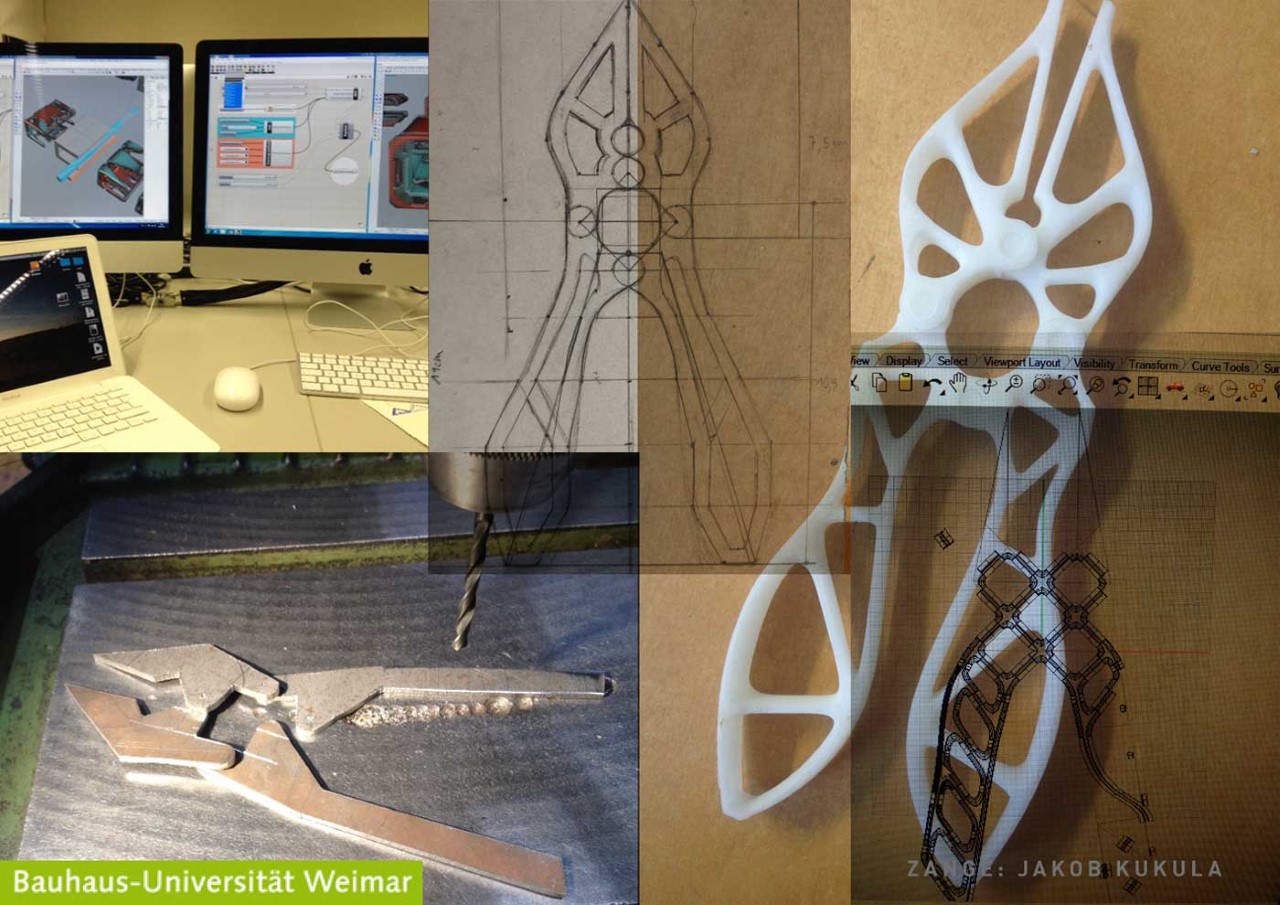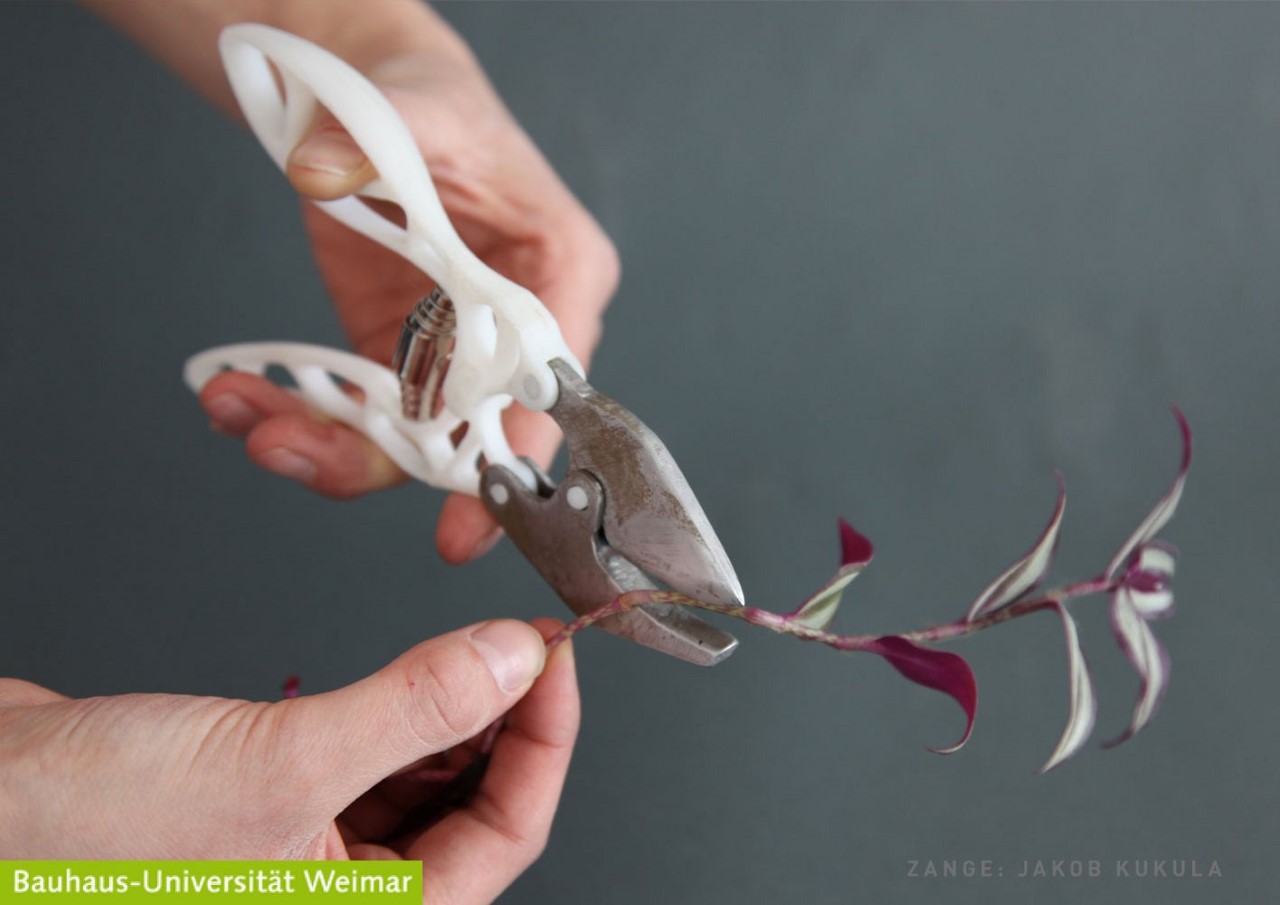
Following in the footsteps of this generative-designed adjustable wrench by Desktop Metal, the Alu-Zange is an aluminum prototype for a pair of hand-pliers with maximum strength in a minimal material footprint. Designed by Jakob Kukula, former student at Bauhaus University, Weimar, the Alu-Zange pushes the boundaries of product functionality using SKO, or Soft-Kill Option, an evolutionary approach for topology optimization that uses algorithms to determine the least amount of material required to retain 100% product functionality. In a way, SKO works exactly how nature does, optimizing the shape and structure of the skeletons of animals, giving them an evolutionary edge in their own way.
The Alu-Zange was the result of an SKO-based university project, but its practical design has applications that extend beyond the confines of a school curriculum. The hand-plier comes with a design that’s ergonomic and functional, but boasts of a lightweight design thanks to how little material it actually uses. To ensure that the slim plier has no points of failure, it comes with a four-point linkage system that lets you grip objects with the handles. easily. Moreover, the handles have a grippy, broad design that can either be held the conventional way, or in a secure manner by sliding your thumb and finger into the hollow elements in the grip’s design.
Designer: Jakob Kukula

The Alu-Zange’s unique design is the result of a generative algorithm that helps determine the form with the best strength-to-weight ratio possible. Obviously, ergonomics and usability play a main role here, which is where Jakob’s design abilities come in. The unique linkage system between the grip and the plier jaws is a unique touch too, and I could totally see it having its own function as well, like gripping or breaking open things… but I’m getting ahead of myself here. What’s remarkable here is how incredibly skeletal the plier looks, showing that you don’t need to make workshop tools rugged. You just need to be efficient with how you allocate material.

Purely for the purpose of this university exercise, Jakob fabricated his concept from plastic and aluminum, although the real tool would be made from cast iron or tool steel. It’s possible to 3D-print this design, although casting seems like the best bet too, given how the form has no complicated contours that would make molding and de-molding difficult. The hinge could still be a single pivot mechanism if you ask me, but I’m honestly curious to see how this 4-point linkage would work.

The post The Secret to Stronger, Lighter Tools: Meet the Hand-Plier with a Durable, Hollow Design first appeared on Yanko Design.
0 Commentaires